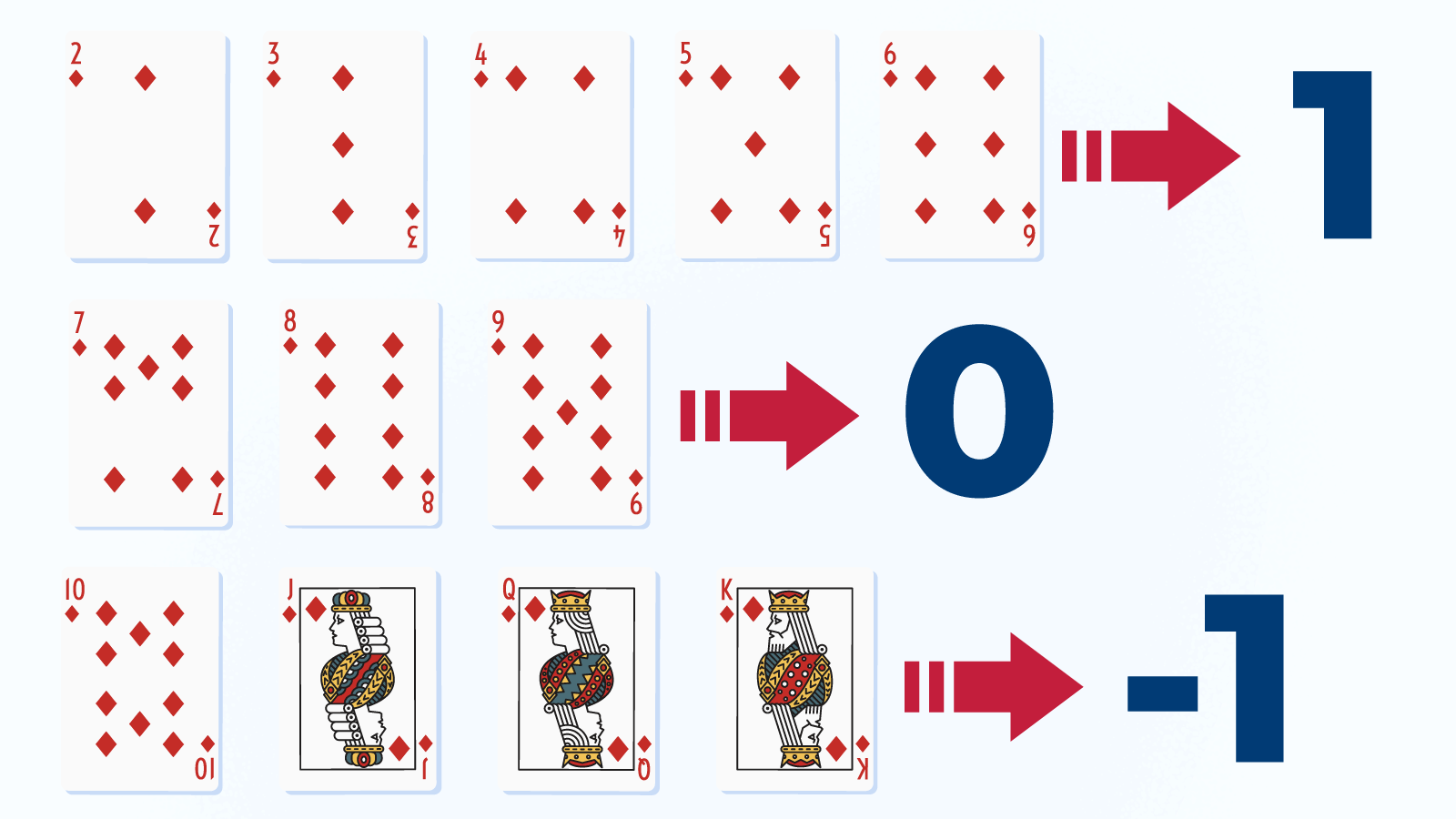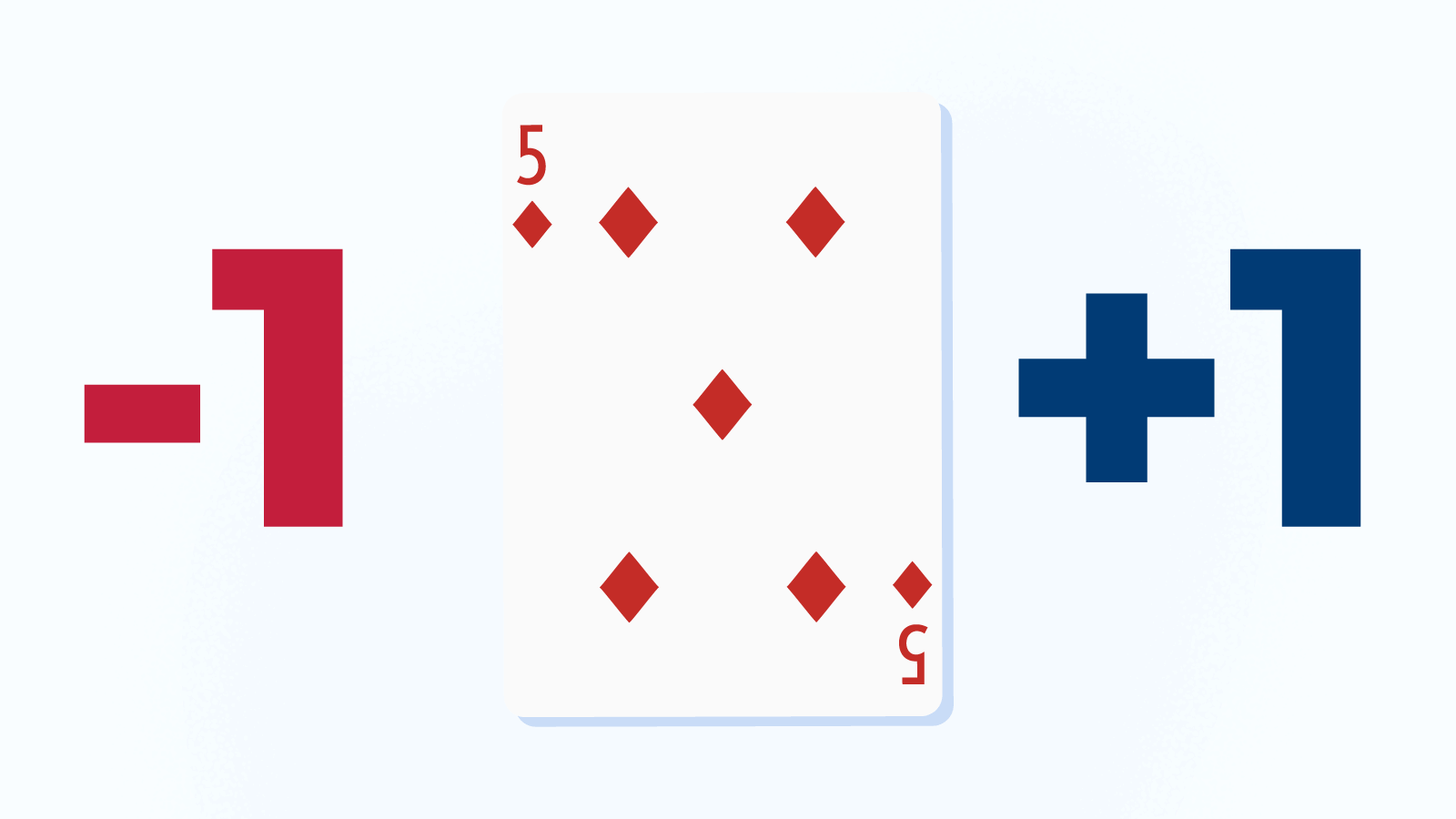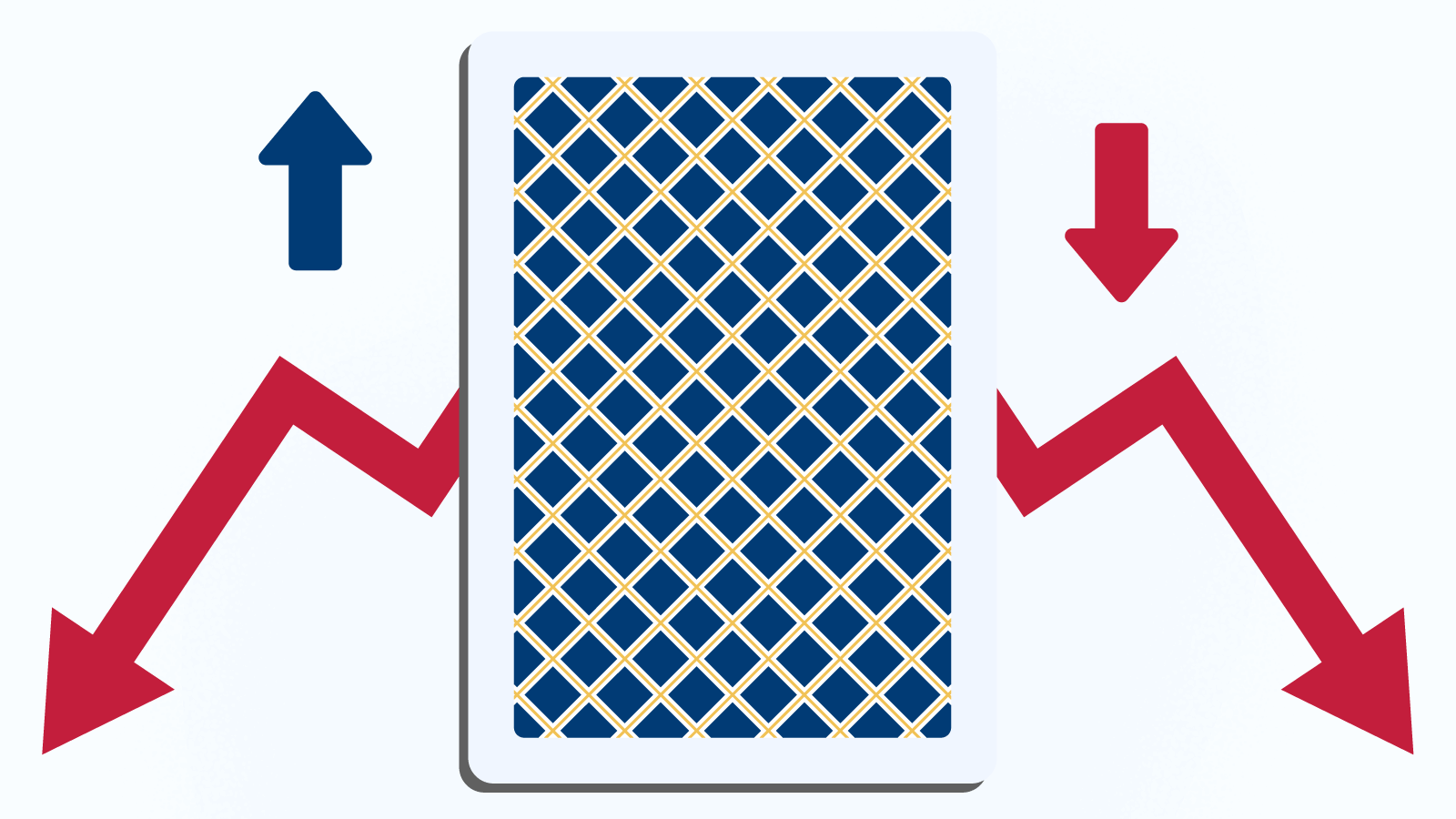The Art of High Low Card Counting In Blackjack
KingCasinoBonus receives money from casino operators every time someone clicks on our links, influencing product placement. The compensation we receive does not impact our recommendation, advice, reviews and analysis in any way. Our content will always remain objective, independent, straightforward, and free from bias.

Think card counting is illegal? It’s not, but it’s not easy either. This 2025 KCB guide breaks down how smart UK players use the high-low card counting system to boost their odds in blackjack. You’ll learn how to track the deck, adjust your bets, and apply this method safely, whether online or at a land-based casino.
On this page
- Understanding the Basics
- Implementing the Strategy
- The Adding and Subtracting are Conducted Based on the Cards’ Assigned Point Value
- Can You Use Hi-Lo Counting at Live Dealer Blackjack Tables?
- Advanced Techniques and Raising the Bets
- Potential Pitfalls of the Hi-Lo Counting System
- Smarter Alternatives to Card Counting in Online Blackjack
- Best UK Blackjack Casinos for Practising the Hi-Lo System
- Keep practising!
Understanding the Basics

If you’re already confident playing blackjack, card counting is one strategy that can take your skills to the next level. One of the most effective systems is called the High-Low (Hi-Lo) system, which you can use with a blackjack bonus at all online casinos available in our database.
This strategy doesn’t require memorising every card, but rather tracking the balance between high and low-value cards during the game. The goal? To figure out when the odds tilt slightly in your favour and adjust your bets accordingly.
What Are You Actually Counting?
The Hi-Lo system groups cards into three value sets:
| Card Type | Cards Included | Assigned Value |
|---|---|---|
| Low Cards | 2, 3, 4, 5, 6 | +1 |
| Neutral | 7, 8, 9 | 0 |
| High Cards | 10, J, Q, K, A | -1 |
You maintain a running count by watching each card dealt and applying the values above. A positive count suggests more high-value cards remain, which is good news for players.
When Do You Start Counting?
You should begin your count as soon as a new shoe (or deck) is shuffled and dealt. If you join a game mid-shoe, it becomes nearly impossible to maintain an accurate count.
Why Is It Called a “Balanced” System?
In a full deck, the number of +1 and -1 cards is equal. That’s why it’s called balanced; if you count through an entire deck correctly, your final running count should be zero.
Important: Use with Caution
While card counting isn’t illegal in the UK, casinos (both online and land-based) can ban your account if they detect consistent patterns. That’s why Hi-Lo is often better used in practice with friends or for understanding blackjack odds, not necessarily as a live strategy in UKGC-licensed sites.
Implementing the Strategy

Counting cards with the high-low system rests upon adding and subtracting 1, depending on the type of card the dealer draws.
You always start your count at 0, and, to reiterate, it is vital to begin the running count at the very start of the game when no cards have yet been drawn from the decks
Failing to count one card, let alone more, can throw the count off balance and lead to a faulty calculation.
The Adding and Subtracting are Conducted Based on the Cards’ Assigned Point Value
Each time a dealer draws from the shoe, you add or take 1, or don’t do anything if the dealer draws a non-counting card (7, 8, or 9).
Counting the cards based on their assigned value falls within the ‘running count.’
Example:
For instance, if the initial 10 cards the dealer draws are 2, 6, J, 8, J, K, 7, 4, 5, and 3, the running count in this instance is 1+1-1+0-1-1+0+1+1+1, which equals 2.
Can You Use Hi-Lo Counting at Live Dealer Blackjack Tables?
Many UK players today prefer live dealer blackjack over RNG versions. So, can you still use the Hi-Lo system in this format?
In most cases, card counting is extremely difficult and often ineffective at live blackjack tables. That’s because most providers now use Continuous Shuffling Machines (CSMs), which automatically reshuffle the cards after every round or a few hands. This makes maintaining a meaningful count nearly impossible.
However, some non-CSM tables do exist, particularly in games with a fixed number of decks and limited reshuffles. These are rare and often have higher betting limits. If you find one, you’ll still need to act quickly and discreetly; many providers monitor for suspicious betting patterns even in live games.
Remember: Even though live blackjack looks more authentic, it’s not the same as playing at a physical table. Casinos still retain tight control over the game pace, surveillance, and deck integrity. Also, our team advises you to learn how to choose the perfect live dealer providers, because you will have a clear overview of your next steps. Keep in mind that if you want to test your hi-lo skills in live sessions, we recommend the live blackjack tournaments, which those available at almost all Pragmatic Play Casinos UK.
Advanced Techniques and Raising the Bets

In the example above, 2 is the ‘running count’ number. Next, you should convert it to the ‘true count.’
To conduct the conversion, divide 2 by how many decks are left in the shoe. This is a key reason why it is recommended to start playing from the beginning, i.e. to stay on track with the number of cards and decks left in the shoe.
The running count is converted to the true count only when the game involves multiple decks. In single-deck games, the running count indicates the value of the remaining deck.
Moreover, the true count will tell you whether or not you have the edge over the house and how big that edge is.
If, for instance, the running count is 6, and you estimate there are about four decks left, you divide 6 by 4, which is 1.5.
The rule of the High-low system is that you get an advantage (edge) over the house if the true count is 2 or more. With a higher true count, you’ll get a higher edge. It also goes the other way around – if the running count starts dropping, the advantage shifts in favour of the house.
As you keep counting, you will have a better idea about placing the appropriate bets (provided your count is accurate).
Naturally, you’d want to make a bet when there is a positive count and the edge is in your favour. It is also advisable to personally decide on an amount of money by which you will increase your bet when the moment is right.
For example, if you start with a bet of £20 when the true count is +2, you make £40 if the count is +3, a £60 wager when the count is +4, and so on. You can double, triple, or quadruple your bet or place a bet considerably larger than the one consistent with this betting method.
Potential Pitfalls of the Hi-Lo Counting System

As you can see from the section above, you decide on your bet amount and type based on the true count. You can place a more significant wager if you have a higher true count. You essentially determine your betting unit and multiply it by the actual count.
So, if you decide on a £10 base betting unit, you should bet £30 if the true count is +3, £40 if the true count is +4, and so on.
However, it is paramount that you master this counting technique, as croupiers, pit bosses, and other casino managers overseeing the gaming tables are fully aware of the risks of card counters.
Raising or decreasing your wager based on the true count will show a pattern of betting tied to card counting that is bound to get noticed. The casino can then take appropriate measures to sanction such practices.
The hi-lo system is unnecessary in single-deck games for reasons already cited. It is also ineffective if the decks are shuffled ahead of every hand – a safeguard employed by online casinos and some brick-and-mortar casinos.
Smarter Alternatives to Card Counting in Online Blackjack
Card counting, like the Hi-Lo system, may seem powerful, but in today’s online and live dealer blackjack environments, especially with automatic shufflers and RNG mechanics, it’s rarely effective. So, how else can you improve your blackjack odds legally and consistently? These strategies are beginner-friendly, UKGC-compliant, and work across most UK online casinos.
- Try Free Bet Blackjack
If you want higher action with lower risk, Free Bet Blackjack is a smart pick. The casino covers your Double Downs and Splits in many hands, giving you more upside, especially when played with perfect basic strategy.
- Use the Surrender Rule Wisely
Sometimes the best move is knowing when to quit early. Blackjack Surrender allows you to fold and lose only half your bet in tough spots (e.g., a 16 vs dealer’s 10). It’s underused, but powerful when applied with discipline.
- Master the Art of Splitting
Knowing when and what to split is key to beating blackjack long-term. Our guide on Blackjack Splitting explains the math, including which pairs to always split (like Aces) and which to avoid (like 10s).
- Understand the House Edge
No strategy works without understanding the odds. Learn how each rule variation affects your chances in our Blackjack House Edge breakdown. You’ll learn which tables to avoid and where your strategy matters.
Best UK Blackjack Casinos for Practising the Hi-Lo System
Ready to try what you’ve learned? While most UK casinos won’t allow true card counting at the tables, some platforms provide excellent environments to practise the Hi-Lo system or test your blackjack strategies risk-free.
Here are some UKGC-licensed casinos where you can explore blackjack with fair RTPs, flexible tables, and helpful features:
- Unibet Casino: Offers a wide range of blackjack variants with RTPs listed. Its interface allows for easy hand tracking and basic strategy testing.
- MrQ Casino: Transparent gameplay with no wagering on bonuses — great for players wanting clear rules.
- LeoVegas Casino: Known for its mobile-friendly live dealer blackjack rooms and practice tables (where available). Check LeoVegas promo collection and pick the one that lets you play live games to test what you’ve learned.
- PlayOJO Casino: One of the best no-wagering platforms in the UK, with a variety of blackjack options and loss-limit tools.
Keep practising!
Hi-lo can be a precious tool for blackjack players, so it would be best if you master it. The method’s popularity is due to its simplicity and efficiency in increasing players’ odds of earning.
However, using the strategy correctly requires practice and patience. In addition to getting the real value of the card you receive, you would also need to know how to swiftly divide the running count by the number of decks remaining.
This is where practice comes in, given that you must avoid any sign that could indicate to the casino that you are engaged in card counting.